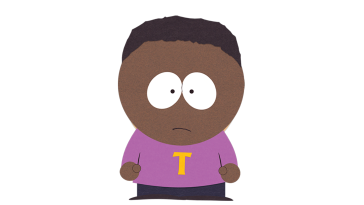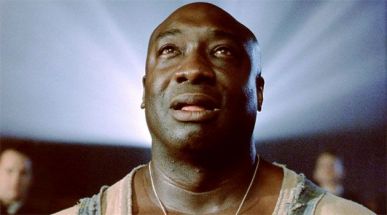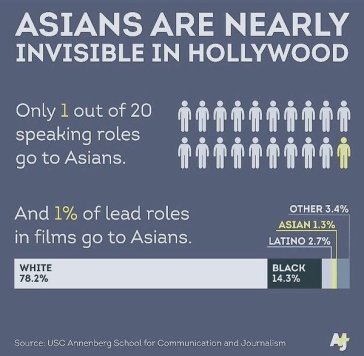Sam Bae
For the midterm, we analyzed how misrepresentation and underrepresentation of minorities in American films. In this paper, I will be examining how entire races have been appropriated in America film. We’ve seen how cultures and ethnicities can be appropriated, but I want to look more into how entire peoples are appropriated as well. We saw in Caliban how Caliban became a broad and general idea of what Africans were perceived to be (Takaki, 2008, p. 28,49). This is a big problem that’s been going on in the American Film industry for quite some time now. We’ve seen white actors playing minorities and appropriating them countless numbers of times. We’ve also seen token minority characters reduced to superficial characters only representing the stereotypes of their race. Race is always a tricky topic to tackle, but it’s a conversation that needs to be had so we can improve upon our flaws.
Over the years as America grew more diverse, TV and film producers realized there was an untapped market to be targeted in minority groups. Their solution to reaching these groups was to add in minority characters sparsely throughout scenes. This is often called the token minority trope and was abused endlessly especially in the 90s-00s. My favorite rendition of this is probably in South Park where the creators parody token minority characters by having the only black kid in South Park literally named “Token.” While we see some ironic uses of this trope like in Harold and Kumar, which was advertised as starring, “That Asian guy from American Pie,” and “That Indian guy from Van Wilder,” the issue lies when this trope is used unironically. It’s just a simple money grab for these big companies, but having token minority characters can leave a very strong impact on people actually from those groups.

The token characters are always very superficial with no background and only serve the purpose of driving the plot and supporting the white protagonists. It’s demeaning and disrespectful to the real lives of minorities. The producers just try to make the character as general as possible and bundle all the stereotypes into this one character so he/she can be “relatable,” but it often distances these minority groups even further. There’s a clear pattern of racist stereotypical characters being cast throughout TV and films.
Black characters are often portrayed as the wise character who has no ambitions for themselves other than to help the white protagonist achieve whatever they need to. These characters act as a crutch to the protagonist simply there to prop up and support the main character (i.e. Michael Clarke Duncan in The Green Mile). Other times black characters are portrayed as thugs or loud and unabashed; the black women are often seen as sassy and flamboyant. Latino characters are often seen as sexy, exotic with thick accents. They’re reduced to the “Latin Lover” role and it’s embarrassing to see an entire race get generalized into a niche role (Nittle).
This stereotyping is also abundant for Asian characters as well. Originally the Asian character was bucktoothed, dumb, and spoke broken English (i.e. Breakfast at Tiffany’s). After Bruce Lee took America by storm, now many Asian actors are even asked if they know martial arts when they are being casted. It’s a shame that a powerful role model from the Asian community has led to even more appropriation and stereotyping because of the success he had. That led to characters like Mr. Miyagi in The Karate Kid who was the mysterious, wise Asian man who was a martial arts expert. Eventually they even took out the protagonist as being Asian and just made it a white character who adopts the culture. In The Last Samurai, Tom Cruise became the savior of the entire history of samurais, which is a Japanese character. Other than martial artists, these days there have been more token Asian characters portrayed as nerdy, weak, and tech-savvy. What’s worse is that these characters almost always lose their ethnicity and are just thrown together as a general Asian (Nittle).
Our community partner, Dustin from SIFF, talked about how large the film industry is and how much influence it wields. He also discussed how cultures are appropriated in the film industry. The American film industry does make the effort to tell the stories of other cultures, but it’s always from an outside perspective. Someone from America goes to another country or does a movie about another country, yet that doesn’t allow for the true culture to shine. SIFF does a great job with specifically choosing films done from people within those cultures, but that ideal has not spread all the way throughout the industry. Media has taken over so much of our world and as it gets larger, it will be even more difficult to spread this issue around.
This issue would not be as relevant if mass media did not have such an influence in our lives, but it controls us. As Postman warned, we have fallen into the trap set up by the media and we are blinded to anything other than it.
“What Huxley teaches is that in the age of advanced technology, spiritual devastation is far more likely to come from an enemy with a smiling face than from one whose countenance exudes suspicion and hate. In the Huxleyan prophecy, Big Brother does not watch us, by his choice. We watch him, by ours (Postman, 1985, p. 155).
We are sucked into media and it controls our lives. There is such a large influence from the film industry that appropriating the culture of these races is so damaging. The industry wields so much power that they can alter people’s frame of reference and perception so easily without anyone even noticing. Films are broadcasted to billions of people every year and when many those films show these minority stereotypes and racist portrayal of characters then the emotional toll adds up. If you’re a minority and you see your race being generalized and appropriated everywhere you look then eventually you start believing those things. Postman warned us about this, but the world didn’t listen and now we are addicted to our “beneficial” screens and accept everything they show us and tell us what to believe.
As a Korean myself, it’s sad to see completely different ethnic groups be morphed into just a general race in the media. These industries appropriate entire races and strip them of all unique features simply to appeal to minority groups and make more money. The Takaki chapter regarding Asians as model minorities really hit home when I was reading it. The media used successful Asians as America’s model minority because they were doing well in school and in the workplace. The media pitted Asians against the other minorities and created an even more polarized America (Takaki, 2008, p. 402-404). We were thrust into a role of “safe” minority when we did not ask for it. Because of this “safe” tag on Asians, racists jokes and underrepresentation of Asian-Americans goes overlooked. Asians only made up 1% of leading roles in films and are the most underrepresented minority group in films proportionally to population (Smith, 2016). While I may not have noticed the effects on myself over time, looking back I can see that it truly did. I gradually grew accustomed to accepting racial jokes and all the stereotypes because that’s what I saw all around me. It was almost a given even that my race be appropriated and generalized to a few aspects. I believe I’m just one example of living proof that appropriation of race and culture can affect people personally because of how widespread it is throughout the film and TV industry. It’s not just damaging the cultures anymore, it’s damaging people’s lives.
References Cited
Nittle, N. K. (n.d.). Common Racial Stereotypes in Movies and Television. Retrieved December 10, 2017, from https://www.thoughtco.com/common-racial-stereotypes-in-movies-television-2834718
Postman, N. (19
85). Amusing ourselves to death: public discourse in the age of showbusiness. New York, NY: Viking Penguin Inc.
Smith, S. (2016, September 6). Hollywood Equality: All Talk, Little Action. Retrieved December 10, 2017, from https://annenberg.usc.edu/news/faculty-research/hollywood-equality-all-talk-little-action
Takaki, R. (2008). A different mirror: a history of multicultural America (Revised ed.). New York: Back Bay Books.

